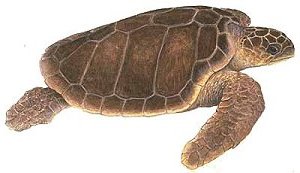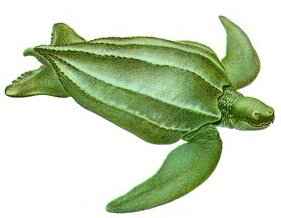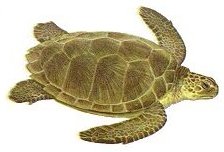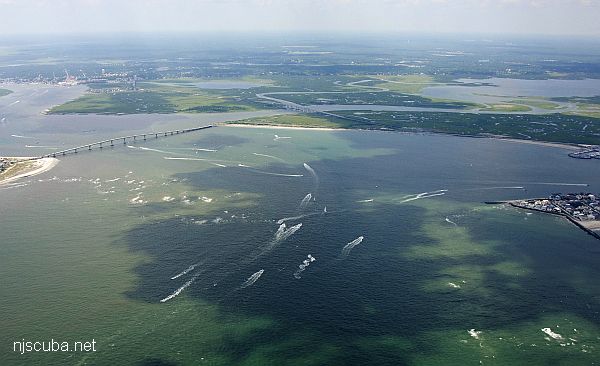Sea Turtles
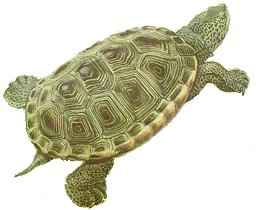
There are few marine reptiles and even fewer in the cold North Atlantic. While it would be possible for a salt-water crocodile to swim up from the Caribbean, there is no record of one ever having done so. Nor are there any of the sea-snakes that are famous in the South Pacific. The only marine reptiles that are encountered in our waters are sea turtles.
The one exception to this is the little Diamondback Terrapin, Malaclemys terrapin. (right) This small turtle ( about 6 inches ) is found only in salt marsh environments. Adults are very strong swimmers and have even been noted in the ocean surf, although I don't think they venture offshore.
The Diamondback Terrapin was well on its way to extinction in the early part of the 20th century owing to its popularity as a gourmet item. Oddly enough, it was saved by Prohibition in the 1930s, since the recipe for terrapin required wine, which was no longer available. Fortunately for the Diamondbacks, the taste for them did not redevelop after Prohibition was repealed, and they have made a strong recovery.
Tortoise-Shell
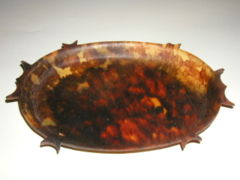
Tortoise-shell is a material produced mainly from the shell of the hawksbill turtle, an endangered species. It was widely used in the 1960s and 1970s in the manufacture of items such as combs, sunglasses, guitar picks, and knitting needles. In 1973, the trade of tortoiseshell worldwide was banned under CITES ( the Convention on International Trade in Endangered Species. )
Tortoise-shell was attractive to manufacturers and consumers because of its beautiful appearance and its durability, and its organic warmth against the skin. It was used in guitar picks because it can be easily shaped, has excellent bending properties, and is very durable - tortoise-shell picks could sometimes be used for years. Pique work, jewelry made from tortoise-shell inlaid with precious metals in patterns or pictures, was made during the Victorian Era and was highly prized.
There have been a number of faux tortoise-shell materials developed since the 1970s, most of which mimic the appearance of tortoise-shell. Tortex is a material that was created to replace tortoise-shell guitar picks and has been widely accepted as a suitable substitute. ( Text and images directly from Wikipedia )
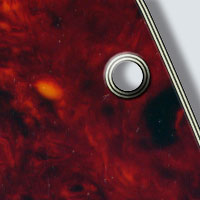
Tortoise-shell pickguards on guitars were common during the '60s and '70s. The material is not real tortoiseshell, but a nitrocellulose plastic, usually laminated to a multi-layer vinyl base, as shown close-up at right. Notice the decorative striping that results from beveling the edges of the lamination.
Once, even cheap guitars came with beautiful pickguards like this, but today the special plastic that gives the lovely translucent tortoise-shell effect is quite rare and expensive. It seems to be sourced from overseas; I have found it imported from Italy. Today, most guitars come with plain plastic mono-colored pickguards.
Nitrocellulose has been replaced by modern plastics for a number of reasons. It is highly combustible, even explosive. When used for these purposes, it is known as flash paper or guncotton. Also, nitrocellulose dries and shrinks with age, often resulting in cracking and tearing around fasteners. And finally, as I said, it is expensive - a roughly square-foot piece can cost as much as $40, while an equivalent piece of vinyl ( like a floor tile ) would be pennies. There are cheaper imitations, and I have even seen photo-printed tortoise-shell patterns, but if you want that real classic look, there's only one way to go!

